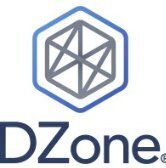#architecture
-
Data integration architecture: Components & best practices
-
An Explanation of Jenkins Architecture
- 1 comment
- 211 views
-
Bridging Design and Runtime Gaps: AsyncAPI in Event-Driven Architecture
-
Streaming Data Pipeline Architecture
DZone ·
- 1 comment
- 59 views
-
Blog: Spotlight on SIG Architecture: Production Readiness
-
The architecture of today’s LLM applications
GitHub ·
- 1 comment
- 141 views
-
IoT Interoperability Solutions With Software-Based Architecture
DZone ·
- 1 comment
- 165 views
-
Let’s Architect! Designing systems for stream data processing
-
Composite Container Patterns in K8S From a Developer's Perspective
-
Event-Driven Architecture With Serverless Functions – Part 1
-
Connecting hybrid and multicloud workloads - Networking Architecture
-
ITS adopts microservices architecture for improved air travel search engine
-
Comprehensive Guide to Microservices Testing: Ensuring Reliable and Scalable Software
-
How To Use Serverless Architecture
- 1 comment
- 122 views
-
Cloud-Native Architecture: The 5 Key Principles Explained
-
How do message queue architectures evolve?
James ·
- message queues
- queues
- architecture
- rabbitmq
-
+2 more
Tagged with:
- 1 comment
- 181 views
-
Embrace Change with the Latest Red Hat OpenShift On Red Hat OpenStack Platform Reference Architecture
-
How Event-Driven Architectures Drive Real-Time Operations
-
How To Get More From Your Data Storage Architecture
- 1 comment
- 124 views
-
What is the CloudOps Architecture?
- 1 comment
- 116 views


.png.6dd3056f38e93712a18d153891e8e0fc.png.1dbd1e5f05de09e66333e631e3342b83.png.933f4dc78ef5a5d2971934bd41ead8a1.png)






.thumb.jpg.10b3e13237872a9a7639ecfbc2152517.jpg)
